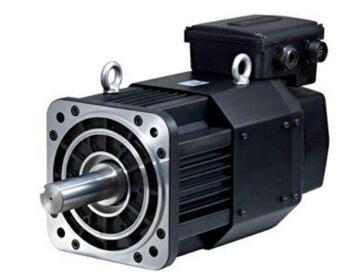
Previously, the editor has introduced the application and system core of servo motors in detail. It can be seen that this motor is widely used in various industries, especially in the application of industrial sewing machines, and the system of this motor can also be divided into servo drives. and servo motor. What I want to introduce today is the specifications of servo motors and the selection of accessories. I hope that after reading this, you will pay attention to the selection matters!
The specifications of each type of servo motor have parameters such as rated torque, torque and motor inertia. There is a correlation between each parameter and the load torque and load inertia. The output torque of the selected motor should comply with the motion of the load mechanism. Conditions require.
However, the weight of the mechanism will affect the selection of the motor, and the motion conditions will also change the selection of the motor. When the inertia is larger, greater acceleration and deceleration torque is required. When the acceleration and deceleration time is shorter, greater motor output torque is also required. When selecting the specifications of the servo motor, follow the steps below:
1. Clarify the movement condition requirements of the load mechanism, that is, movement speed, weight of the mechanism, movement mode of the mechanism, etc.
2. Carry out appropriate load inertia calculation according to the operating conditions and calculate the load inertia of the mechanism.
3. Select the appropriate motor specifications based on the load inertia and motor inertia.
4. Combine the initial selection of servo motor inertia and load inertia to calculate the acceleration torque and deceleration torque.
5. Calculate the load torque based on the load weight, configuration method, friction coefficient, and operating efficiency.
6. The output torque of the primary motor must be greater than the acceleration torque and load torque.
7. Calculate the continuous instantaneous torque based on the load torque, acceleration torque, deceleration torque and holding torque.
8. The rated torque of the primary servo motor should be greater than the continuous instantaneous torque.
Things to note when choosing servo motor accessories are as follows:
1. Some systems such as transmission devices, lifting devices, etc. require the servo motor to stop as soon as possible. However, in the event of a fault, emergency stop, or power outage, the servo has no regenerative braking and cannot decelerate the motor. At the same time, the mechanical inertia of the system is large. At this time, the choice of dynamic brake should be based on the weight of the load, the working speed of the motor, etc.
2. Some systems need to maintain the static position of the mechanical device. At this time, the motor is required to provide a larger output torque and the stop time is longer. If the self-locking function of the servo is used, it is easy to cause the motor to overheat or the amplifier to be overloaded. Therefore, in this case, it is recommended that you choose a motor with electromagnetic braking.
3. Some servers have built-in regenerative braking units. However, when regenerative braking is more frequent, it may cause the DC bus voltage to be too high. In this case, a regenerative braking resistor needs to be installed. However, for questions such as whether the regenerative braking resistor needs to be equipped separately and how large the regenerative braking resistor should be, please refer to the instructions for use of the corresponding sample.
In addition, it should be noted that the number of braking times in the general sample list is the data of the motor when it is no-load. In actual selection, the inertia ratio must be calculated based on the load inertia of the system and the motor inertia in the sample, and then the inertia ratio shown in the sample list The number of braking times divided by (inertia ratio 1), the data obtained is the allowable number of braking times.



















